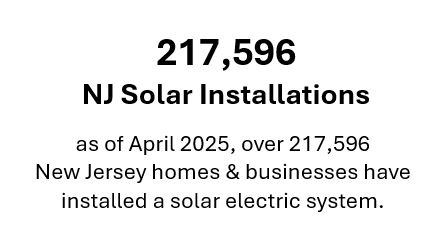Permits, Agreements, and Warranties
What permits will I need?
Prior to installation, you must apply for a building and/or an electrical permit from your local building department. The installation contractor typically obtains the necessary permits and includes these costs in the overall system price. In some cases, the contractor may not know how much time or cost will be involved in “pulling” a permit. If so, this task may be priced on a time-and-materials basis, particularly if additional drawings or calculations are required by the permitting agency. In any case, make sure you discuss permitting costs and responsibilities with your contractor.
If your community has a homeowners' association that must approve a solar electric system, you or the contractor will need to submit your plans to obtain approval from the association before beginning the installation.
After installation, the system must be inspected and approved by a representative of the local permitting agency (a building or electrical inspector) and by the utility that holds your interconnection agreement. Inspectors may require installation contractors to make corrections after installation, but don't be concerned, as this is not unusual.
What warranties do I need?
Systems must be covered by a full (not “limited”) five-year warranty and any manufacturers' warranties on specific components. Coverage must include all parts and labor, plus the cost of removing, shipping and reinstalling or replacing a defective component.
You should know who is responsible for honoring warranties, whether it is the installation contractor or the manufacturer. Each should disclose their warranty responsibility. Make sure you read the document carefully, reviewing terms and conditions with the vendor. Understand financial arrangements, like contractor's bonds, that assure the warranty is honored. A warranty doesn't guarantee that a vendor will stay in business, so you need to know whom to contact in case of a problem. New Jersey's Clean Energy Program requires that you submit a Solar Technical Worksheet that specifies warranty terms along with the additional information that should be included in the registration packet.

Net Metering, SRECs and Ownership
Net metering
Net Metering refers to subtracting the amount of electricity produced by your solar system from the total amount consumed by your home or business – thus “netting out” your electric bill. As we mentioned earlier, there may be times when your solar system produces more power than your home or business is using. At those times, the excess power is sent back into the grid and your electric meter literally spins backwards. You'll receive the full retail value of that excess power because it will be subtracted from the total amount of electricity you buy from your utility. In the event that your system produces more electricity than your home or business uses in a 12-month period, you will be credited for the wholesale value of the excess amount.
Speaking of metering, your solar system will need to be connected to two meters. One, as noted above, will net out the electricity you produce against the electricity you consume. The second meter, called a “production meter”, measures the output of your solar system for the purpose of determining how many Solar Renewable Energy Certificates (SRECs) you are entitled to earn. For more details, visit our Metering Requirements page.
Solar Renewable Energy Certificates (SRECs)
SRECs essentially place a dollar value on the environmental and other societal benefits of solar energy and, in doing so, help the owner of a solar electric system recover their investment by providing revenue beyond the value of the electricity the system produces.
SRECs are used by power producers in New Jersey to meet the state's Renewable Portfolio Standard – a requirement that a certain percentage of the power they sell each year comes from clean, renewable resources. If those producers don't have their own solar systems, they must buy the SRECs of people who do. SRECs are a market-based commodity, so their value can fluctuate depending on supply and demand.
The owner of a solar system receives one SREC each time their system produces 1,000 kilowatt-hours (also called one megawatt-hour) of electricity in the first 10 or 15 years (pending intrepretation of Legislation) of its operation. SRECs are deposited and held in an electronic account that can be accessed by the owner via the internet. These accounts are hosted by the Generation Attribute Tracking System (GATS) managed by PJM-Environmental Information Systems (PJM-EIS), which is the current SREC Administrator. Find out more answers to many frequently asked questions about SRECs.
System Ownership
It wasn't too long ago that the only way a home or business owner could get involved with solar energy was to purchase a system outright. This generally involved a large up-front capital cost that proved to be a barrier for many people. Over the past several years, though, other options have been created to make solar energy available to a broader base of residential, commercial and governmental customers.
- Outright ownership is the option where the customer buys the system from the installer and receives the tax incentives, SRECs and net metering benefits. The system may be financed by the customer through a bank loan or other financing arrangement if the customer does not have the capital to cover full purchase price.
- A Power Purchase Agreement, or PPA, is an option in which the customer agrees to buy the electricity produced by a solar system on their home or business that is installed, maintained and owned by a third party. There is generally little or no up-front cost to the customer, although they are contractually obligated to buy the power at a set price over a certain number of years. The third-party system owner receives the tax incentives and SRECs.
- A leasing arrangement in which the customer pays a fixed monthly price to a third party who installs, maintains and owns the solar system. Like a PPA, a leasing arrangement generally requires little or no up-front costs; but unlike a PPA, a leasing arrangement features a fixed monthly price instead of a per-kilowatt-hour cost for the electricity produced. The third party system owner receives the tax incentives and SRECs.
It's important that you carefully examine all of your purchasing and leasing options to find the one that is right for you.
Follow these links for additional information:









.jpg)
